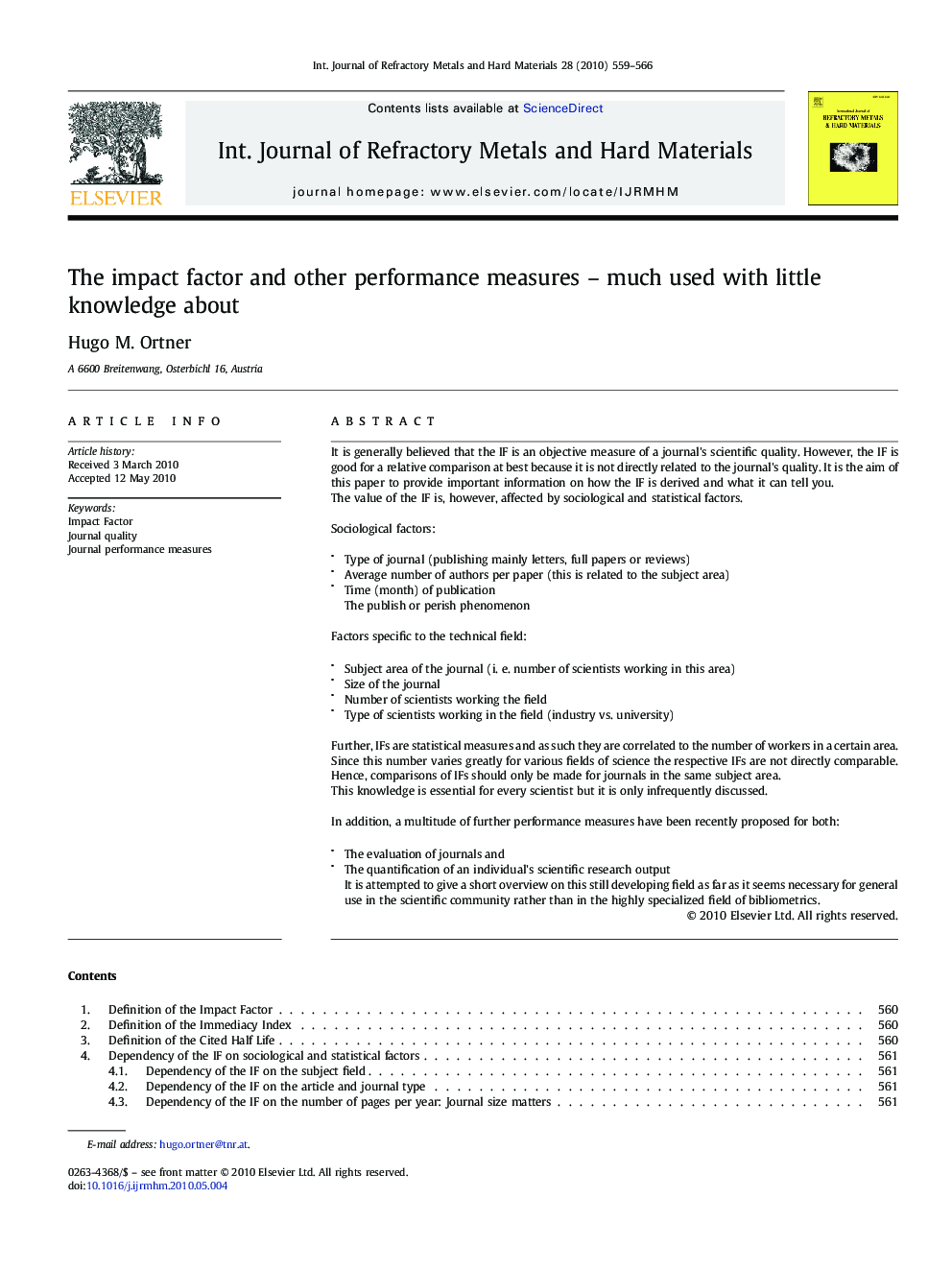| Article ID | Journal | Published Year | Pages | File Type |
|---|---|---|---|---|
| 1604265 | International Journal of Refractory Metals and Hard Materials | 2010 | 8 Pages |
It is generally believed that the IF is an objective measure of a journal's scientific quality. However, the IF is good for a relative comparison at best because it is not directly related to the journal's quality. It is the aim of this paper to provide important information on how the IF is derived and what it can tell you.The value of the IF is, however, affected by sociological and statistical factors.Sociological factors:•Type of journal (publishing mainly letters, full papers or reviews)•Average number of authors per paper (this is related to the subject area)•Time (month) of publicationThe publish or perish phenomenonFactors specific to the technical field:•Subject area of the journal (i. e. number of scientists working in this area)•Size of the journal•Number of scientists working the field•Type of scientists working in the field (industry vs. university)Further, IFs are statistical measures and as such they are correlated to the number of workers in a certain area. Since this number varies greatly for various fields of science the respective IFs are not directly comparable. Hence, comparisons of IFs should only be made for journals in the same subject area.This knowledge is essential for every scientist but it is only infrequently discussed.In addition, a multitude of further performance measures have been recently proposed for both:•The evaluation of journals and•The quantification of an individual's scientific research outputIt is attempted to give a short overview on this still developing field as far as it seems necessary for general use in the scientific community rather than in the highly specialized field of bibliometrics.
